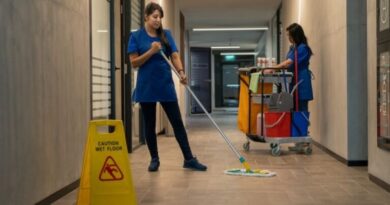The global upheaval caused by the COVID-19 pandemic has disrupted educational systems across the globe, resulting in substantial learning setbacks among students. Prolonged periods of remote learning, diminished classroom interaction, and the challenges associated with adapting to virtual learning environments have led to discernible gaps in knowledge and skills.
As we navigate the post-pandemic landscape, it becomes imperative to confront these educational setbacks and implement effective strategies to facilitate students’ recovery and flourishing.
1. Diagnostic Assessments: Unveiling Learning Gaps
A crucial initial step in tackling educational setbacks involves conducting diagnostic assessments. These assessments serve to pinpoint the specific areas where students face challenges, unveiling their individual learning needs. By discerning these knowledge gaps, educators can tailor their guidance and support, addressing these areas directly and effectively.
2. Tailored Instruction: Personalizing Learning Plans
Following the identification of learning gaps, providing tailored instruction becomes paramount. Generic group instruction may prove insufficient in bridging these gaps effectively. Educators can craft personalized learning plans for each student, honing in on the specific areas that require attention. This approach allows for focused remediation, ensuring that students receive the necessary support to catch up.
3. Intensive Intervention: Bridging Significant Gaps
For students experiencing more pronounced learning setbacks, the implementation of intensive intervention programs becomes essential. These programs furnish additional support and targeted instruction to help students bridge the gaps in their learning. Intensive intervention may encompass small-group instruction, supplementary resources, and regular progress monitoring to track each student’s growth.
4. Extended Learning Opportunities: Beyond Classroom Hours
Introducing extended learning opportunities beyond regular classroom hours proves beneficial in mitigating learning loss. This could involve after-school programs, tutoring services, or online resources providing students with avenues to practice and reinforce their learning. By extending the learning time, students gain more opportunities to catch up and solidify their understanding.
5. Social-Emotional Support: Nurturing Well-being
The pandemic has taken a toll on students’ mental health. Addressing their social and emotional needs is crucial for fostering a conducive learning environment. Schools can invest in counseling services, establish support groups, or implement mindfulness and stress reduction techniques to assist students in navigating the emotional challenges they may be facing.
6. Collaborative Partnerships: Synergizing Efforts
Effectively tackling learning setbacks necessitates fostering collaborative partnerships. Schools can collaborate with parents, community organizations, and other stakeholders to provide additional support and resources. Engaging families in the educational process and involving the community can cultivate a holistic approach to addressing learning challenges.
7. Data-Driven Decision Making: Informed Strategies
Data-driven decision-making assumes a pivotal role in addressing learning setbacks. Regular assessments and progress monitoring empower educators to identify trends and adjust instructional strategies accordingly. Analyzing data yields insights into the effectiveness of interventions, guiding future decision-making processes to support student learning.
8. Professional Development: Equipping Educators
To effectively address learning setbacks, educators themselves may require additional support and professional development. Training sessions can equip teachers with strategies and resources tailored to address learning gaps. Schools and districts should invest in professional development opportunities focusing on effective instructional practices and individualized support for students.
9. Equity and Access: Ensuring Inclusivity
Addressing learning setbacks demands a commitment to equity and access. It is imperative to ensure that all students have equal opportunities to access resources and support. This includes providing technology devices, internet access, and any necessary accommodations to bridge the digital divide and create an inclusive learning environment for all.
10. Positive Reinforcement and Motivation: Nurturing Growth Mindset
Lastly, providing positive reinforcement and motivation to students as they work towards catching up is crucial. Recognizing their progress, celebrating achievements, and fostering a growth mindset can boost confidence and motivation. Encouraging a supportive and uplifting classroom culture can significantly impact students’ overall learning experience.




